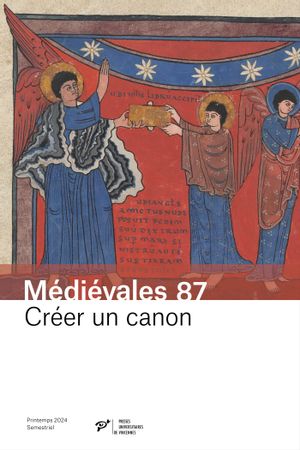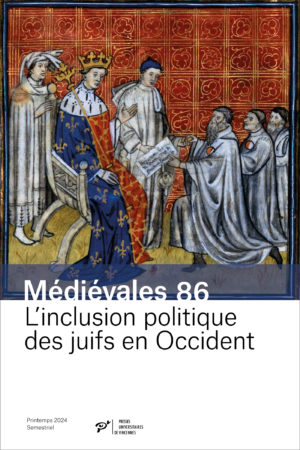Alain Boureau : « Satan the Heretic : the Judicial Institution of Demonology under John XXII »
The institution of demonology, understood as an autonomous discipline dedicated to the detection and pursuit of demons and sorcerers, is generally located in the 15th century, at the beginning of the great witch-hunts. This article suggests that we advance this chronology by at least a century, and consider the sustained efforts of Pope John XXII, who, throughout the 1320s, strove to define the invocation of demons as a heretical act. The establishment of commissions of doctrinal or judicial inquiry testify to the Pope’s orientation, which can be explained by his anxiety in the face of developing practices of magic and astrology, and by his conviction that such acts revealed opinions that had been carefully concealed in the depths of individual conscience. The launching of a full-scale persecution of witches was delayed only by the persistent suspicions of John XXII and his successors regarding the inquisitorial courts.
Demonology – heresy – John XXII – Inquisition – intention – magic – judicial procedure
Gábor Klaniczay : « Between angelic visions and shamanistic trance : the Witches’ Sabbath in the Formicarius of Nider »
The Formicarius of Johannes Nider (1380-1438), finished around 1435, describes saints and heretics, visions, revelations, phenomena of possession and simulation, extraordinary virtues and mortal sins, miraculous workings and the deeds of magicians and sorcerers. To explain the extraordinary significance of religious trance in these stories, we propose to examine the hypothesis of a correlation between shamanism, religious ecstasy and the emergence of the beliefs in diabolic witchcraft. Following the very original conceptual scheme of Nider, who juxtaposes visions of heavenly and diabolic origin, we analyse successively the relationship between shamanism and visionary sainthood at the end of the Middle Ages, then between the former and the witches’ sabbath, to able to show, finally, in what ways could the trance be considered as a common point between the saint and the witch, who constitute a binary system with a shaky polarity in the 15th century.
Shamanism – sainthood – witchcraft – Johannes Nider – Formicarius
Martine Ostorero : « A Preacher in Jail : Guillaume Adeline and the Witches’ Sabbath »
In 1453, Guillaume Adeline, preacher and master of theology, is arrested by the bishop of Évreux and the inquisition. Since the end of the 1430’s, he was accused of belonging to diabolical sects of witches, mainly because he preached the non-existence of the witches’sabbath, and proclaimed that the flight of witches was an illusion instilled in men’s spirit by the devil, thus favoring the spread of those sects. This affair shows the importance of the fifteenth century debate about the sabbath, be it a reality or a diabolical dream. Some french demonologues such as Nicolas Jacquier or Pierre Mamoris stress out Adeline’s exemplary case as an opportunity for asserting the seriousness of diabolical manifestions among the people, for denouncing the proliferation of heterodox sects, and for inciting judicial proceedings.
Demonology – witches’sabbath – preacher – Inquisition – Nicolas Jacquier
Franck Mercier : « A Malefic trompe-l’oeil : the image of the witches’ sabbath in illuminated manuscripts from the Court of Burgundy (relating to the Traité de crisme de Vauderie by J. Taincture, towards 1460-1470) »
Illustrated representations of the witches’ sabbath are rare before the end of the Middle Ages. Three Flemish miniatures forming the frontispiece of several French illustrated manuscripts of the Traité de crisme de Vauderie by the theologian Jean Taincture constitute a remarkable exception. Dating from 1460-1470, they show a scene of worship of the devil as Goat and have been interpreted precipitately as purely an expression of lust. However, if these images are seen in the context of the iconographic theme of the Mystical Lamb, as elaborated by Van Eyck towards 1430, and more especially of the Jean Taincture’s text, they assume a new meaning. In its own way, the Flemish imagery of the witches’ sabbath demonstrates what the crime of witchcraft had become in the 15th century : a serious undermining of divine omnipotence.
Burgundy – 15th century – image – devil worship – mystical lamb
Jean-Patrice Boudet : « Demonological who’s who of the 16th century and their medieval ancestors »
The Livre des esperitz, copied in the middle of the sixteenth century in Ms. Cambridge, Trinity College O.8.29 (and published here for the first time), and the Pseudomonarchia daemonum, published by Johannes Wier in 1577, may be considered as demonological who’s who, i.e. lists of demons, with their titles, physical apparences, fonctions and number of troops, accounted in legions. Both are late testimonies of a textual tradition which have belonged to ritual magic since the 13th century at least. Two other partial lists of demons appear in 15th century magical manuscripts. Demoniacal majesty appears here in its glory but those demons seem rather benevolent, and even beneficent, which is curious and even scandalous for the keepers of christian orthodoxy. Actually, magical demonology resists to the bipartition of angelical universe, proper to medieval christianism.
Demons – demonology – ritual magic – Livre des esperitz – Johannes Wier
Georg Modestin : « The Gentleman, the Witch and the Devil : Reginald Scot, an Early Modern Social Anthropologist ? »
This paper analyses the way witches, as well as the devil and the witches’ Sabbath are represented in Reginald Scot’s sceptical treatise The Discoverie of Witchcraft of 1584. In a second step, Scot’s heritage in modern historiography of witchcraft is explored.
Witchcraft – England – 16th century – Reginald Scot – historiography
Carmen Rob-Santer : « The Malleus maleficarum and its Historiography : a Kulturkampf ? »
Whenever witchcraft is discussed in historical literature the Malleus maleficarum is bound to make its appearance. Its wide popularity – almost thirty Latin editions between 1486 and 1669 and the modern translations of the 20th century, above all the German one by J.W.R. Schmidt, aimed at a wider readership – stands in marked contrast to a lack of studies about the precise context and contents ot the book. The reason why it lent itself to such exceptional treatment can be found in the fact that it was published together with the papal bull Summis desiderantes affectibus which served as an ultimate authorization of the treatise. In turn this proved to be an irresistible opportunity both for the authors of Enlightenment and, even more so, polemicists of Kulturkampf era to take a swipe at the “dark history” the Catholic Church – notwithstanding the fact that Protestants had proved to be at least as active in the persecution. This instrumentalization of the book served to give the discussions of the Malleus maleficarum a specifically German character. It might be interesting, however, to take a critical look not only at the actual importance of the Malleus maleficarum in later years, but also to analyse its contents within the intellectual paradigms of its period.
Witchcraft – Malleus Maleficarum – historiography – H. Institoris – J. Sprenger
Édouard Bouyé : « The Pontifical Arms at the end of the 13th century : the Making-off a Communication Process »
The beginnings of pontifical heraldry are not well known. One needs first to set out the principal stages leading to the adoption of arms by the popes at the end of the 13th century, before one can propose any interpretative hypotheses. The keys, as arms of the Church, appear under Innocent III. However the first pope to make use of his family arms is Nicolas III Orsini. Boniface VIII was the first to bring together his family arms and the keys and tiara (he has also left an important number of heraldic testimonies).
The adoption of keys as arms of the pope is one aspect of the imitatio imperii. The aristocratic and emblematic representations function at the same time as an aristocratic celebration. The heraldic formula sketched by Boniface VIII is definitively fixed by John XXII : it is a metaphor of the Church as mystical body of Christ.
Papacy – heraldry – Rome – emblems – cardinal






